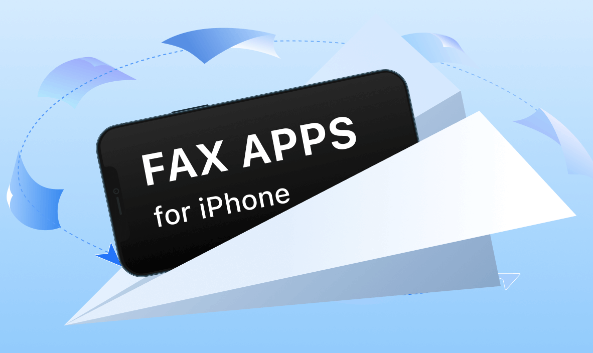In the contemporary digital era, email remains one of the most predominant forms of business communication. With its unrivalled efficiency and ubiquity, email bridges gaps between organisations and their global workforce, facilitating seamless collaboration. However, this prevalence has also placed email at the epicentre of cybersecurity concerns, with cybercriminals leveraging it as a primary vector for nefarious endeavours.
The Double-Edged Sword of Email Popularity
The increasing reliance on email for business operations is evident in the numbers. A report from Statista revealed that approximately 306.4 billion emails were sent and received each day in 2020, a figure projected to increase to over 392.5 billion daily emails by 2026. Further emphasizing email’s significance, the Radicati Group reported that the number of global email users is expected to grow to 4.6 billion by 2025.
While the broad adoption of email has undoubtedly streamlined business processes, it has simultaneously become a beacon for cybercriminals. Recognizing the rich trove of sensitive data, intellectual property, and operational significance within emails, malicious entities are continuously launching attacks. These range from craftily disguised email payloads, such as infected attachments that can paralyze a business with a single click, to more covert endeavours aimed at extracting confidential data. Their ability to leverage email as an attack vector is further enhanced by exploiting the opportunities offered by generative AI tools.
Moreover, email has become the primary conduit for phishing schemes. Instead of viewing humans as the weakest link, we should understand that people represent one of the most essential defence lines in cybersecurity. Their ability to discern and report potential threats significantly augments our collective cyber resilience. Nonetheless, attackers attempt to exploit lapses in judgment or knowledge, sending deceptive emails masquerading as legitimate entities in hopes of misleading users.
Quantifying the Impact of Email-Based Attacks
The repercussions of email-based attacks on businesses are profound and multi-dimensional:
- The IBM 2023 Cost of a Data Breach report revealed that the average cost of a data breach in 2023 was $4.45 million, a staggering 15.3% increase from 2020. Phishing and Business Email Compromise (BEC) attacks are in the top three of the most expensive data breach factors.
- According to Verizon’s 2023 Data Breach Investigations Report, a significant 24% of all breaches involved social engineering, of which 60% were BEC and 40% were phishing attacks, emphasizing email’s role as a dominant attack vector. The same report showed that phishing emails were the primary initial vector for spreading ransomware.
- VIPRE reports that the finance industry is the most targeted by far, accounting for 48% of all phishing incidents.
Given the stark numbers, businesses, irrespective of their scale, cannot afford to downplay the email security threat landscape.
Inherent Limitations of Native Email Protections
Platforms like Microsoft 365 Outlook have made commendable strides in offering native email protections. Features such as phishing filters, spam blockers, and malware scanners are now par for the course, and for many, these safeguards might seem sufficiently comprehensive. However, herein lies a critical challenge: the potential for a false sense of security.
Relying solely on these inherent protections could lead businesses into a complacent mindset, believing that they are fully shielded from the multifaceted threats that the cyber environment presents. This can be perilous. Just as a castle with only one line of defence can be breached by a determined adversary, so too can email systems that depend exclusively on native security measures.
As cyber adversaries refine their techniques—employing advanced tactics like zero-day exploits, polymorphic malware, and highly targeted spear-phishing campaigns—these basic security protocols can be outpaced. An environment where security is perceived as ‘good enough’ might stagnate regarding adaptive defence mechanisms, leaving potential vulnerabilities unaddressed. The issue is further exacerbated by the adversarial use of AI tools that help criminals craft and launch persuasive and advanced email-based attacks.
Moreover, many of these native tools function on known threat signatures. Advanced attacks, especially those tailored for a specific organization or individual, might operate below these signature-based detection radars, infiltrating systems undetected. In essence, while native email protections are undoubtedly valuable, treating them as the sole line of defence could result in blind spots.
The Imperative of Third-Party Email Security Solutions
In today’s intricate cyber threat landscape, basic inbox defences often fall short. Businesses must recognize these limitations and encourage proactive measures that complement and bolster these foundational protections.
Third-party email security solutions emerge as crucial, offering an advanced layer of protection beyond native capabilities. These specialized tools not only counter sophisticated threats but also adapt to evolving attack techniques. By investing in them, businesses gain the advantage of continuous threat intelligence, superior anomaly detection, and immediate incident response. In essence, they provide a dynamic shield against both current and emerging email threats, ensuring business continuity and data integrity and reinforcing trust among stakeholders.
Redefining Priorities: Key Considerations for Next-Generation Email Security Solutions
As we navigate the frontiers of the evolving digital landscape, selecting an independent email security solution goes beyond a checklist; it calls for strategic foresight. Here’s how thought leaders should recalibrate their criteria:
- Holistic Threat Intelligence: Seek solutions that harness global insights, predicting threats before they materialize, transcending reactive models.
- Behaviour-Driven Analytics: Prioritize platforms adept at understanding the unique behaviour patterns of users, pinpointing anomalies with precision.
- Adaptive Sandboxing: Value solutions that can simulate and test threats in real-time, evolving with each interaction.
- Phishing Acumen: Embrace tools that demonstrate mastery in discerning intricate phishing strategies, from spear-phishing nuances to nuanced business email compromise attempts.
- Empowerment Through Education: Opt for platforms that actively bolster user vigilance through educational snippets, transforming employees from potential vulnerability points to vigilant sentinels.
- Agile Scalability and Integration: Champion solutions designed for tomorrow, ones that can scale effortlessly and weave seamlessly into your broader cybersecurity tapestry.
In conclusion, while the challenge posed by advanced email security threats is undeniably immense, it is not insurmountable. With a proactive approach, informed decision-making, and the right technological allies, businesses can confidently navigate this evolving landscape. Optimism, bolstered by action, is our most effective counter to the cyber threats of tomorrow.
The post Navigating the Landscape of Advanced Email Security Threats with Optimism first appeared on IT Security Guru.
The post Navigating the Landscape of Advanced Email Security Threats with Optimism appeared first on IT Security Guru.




